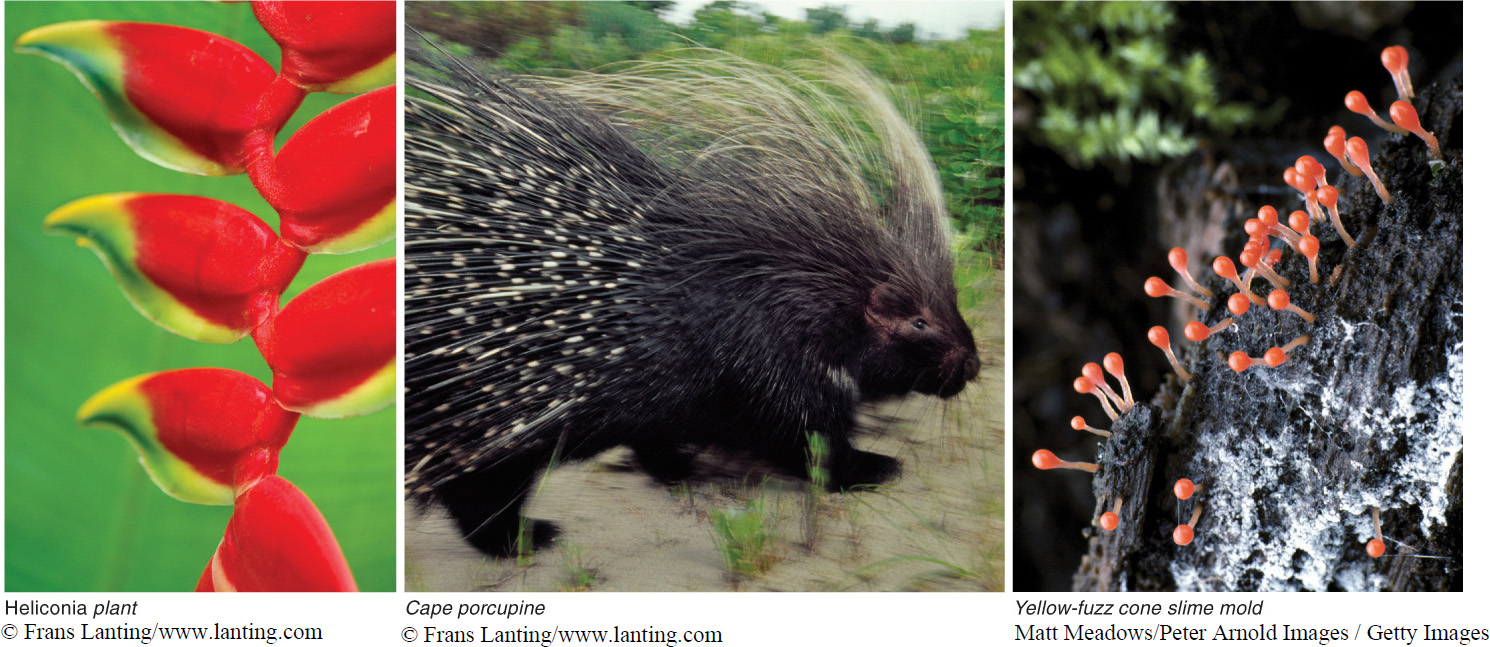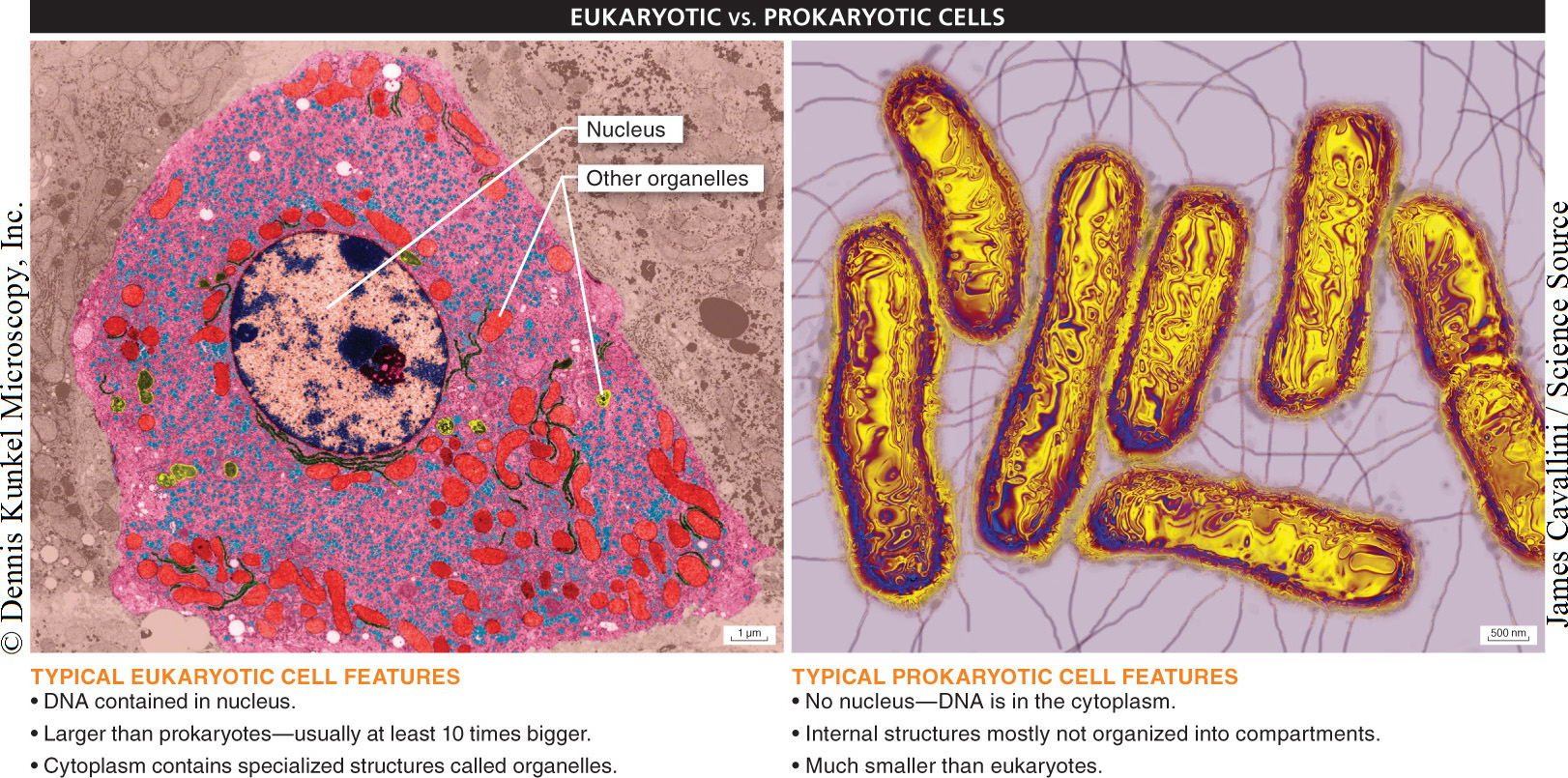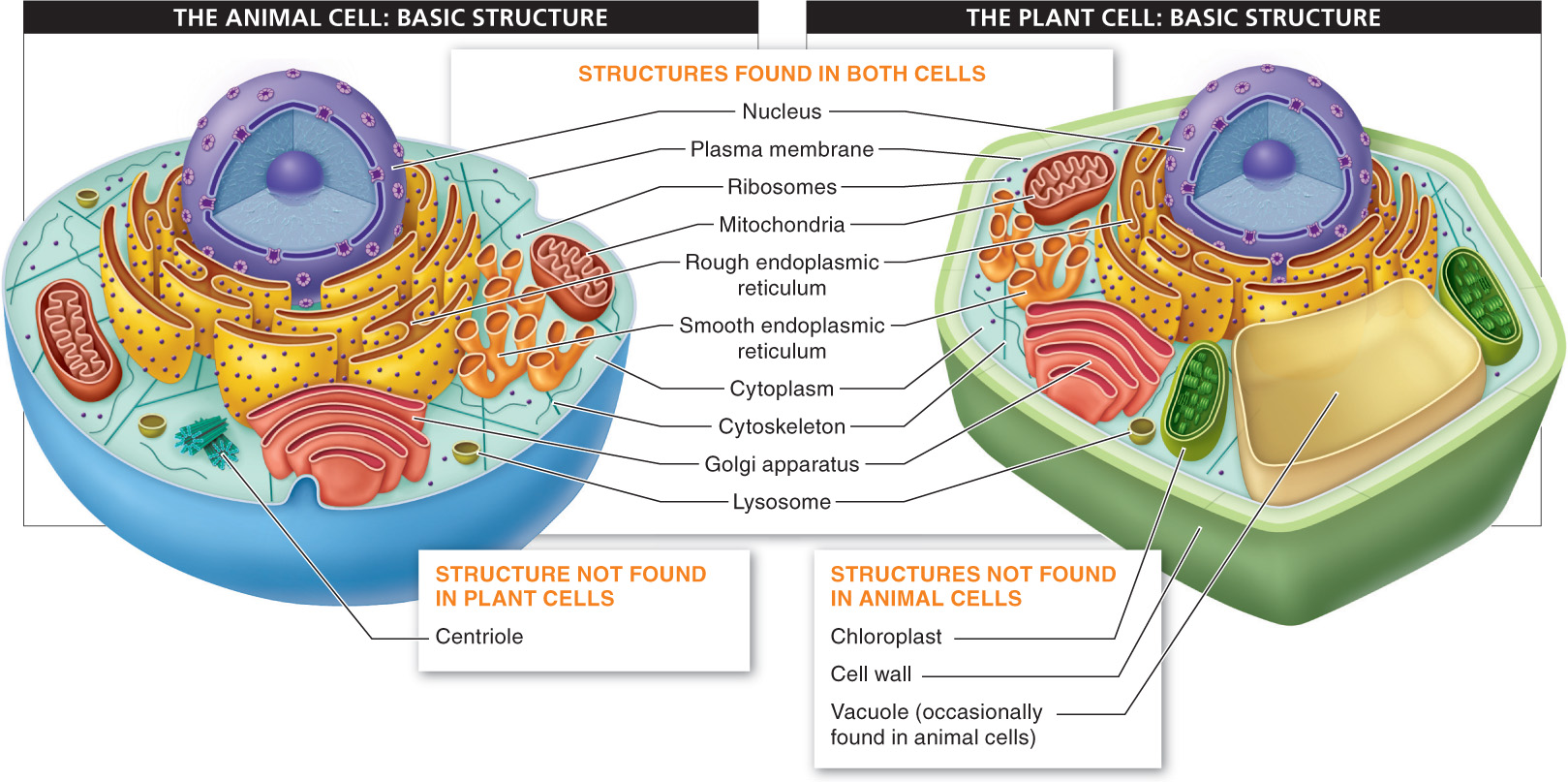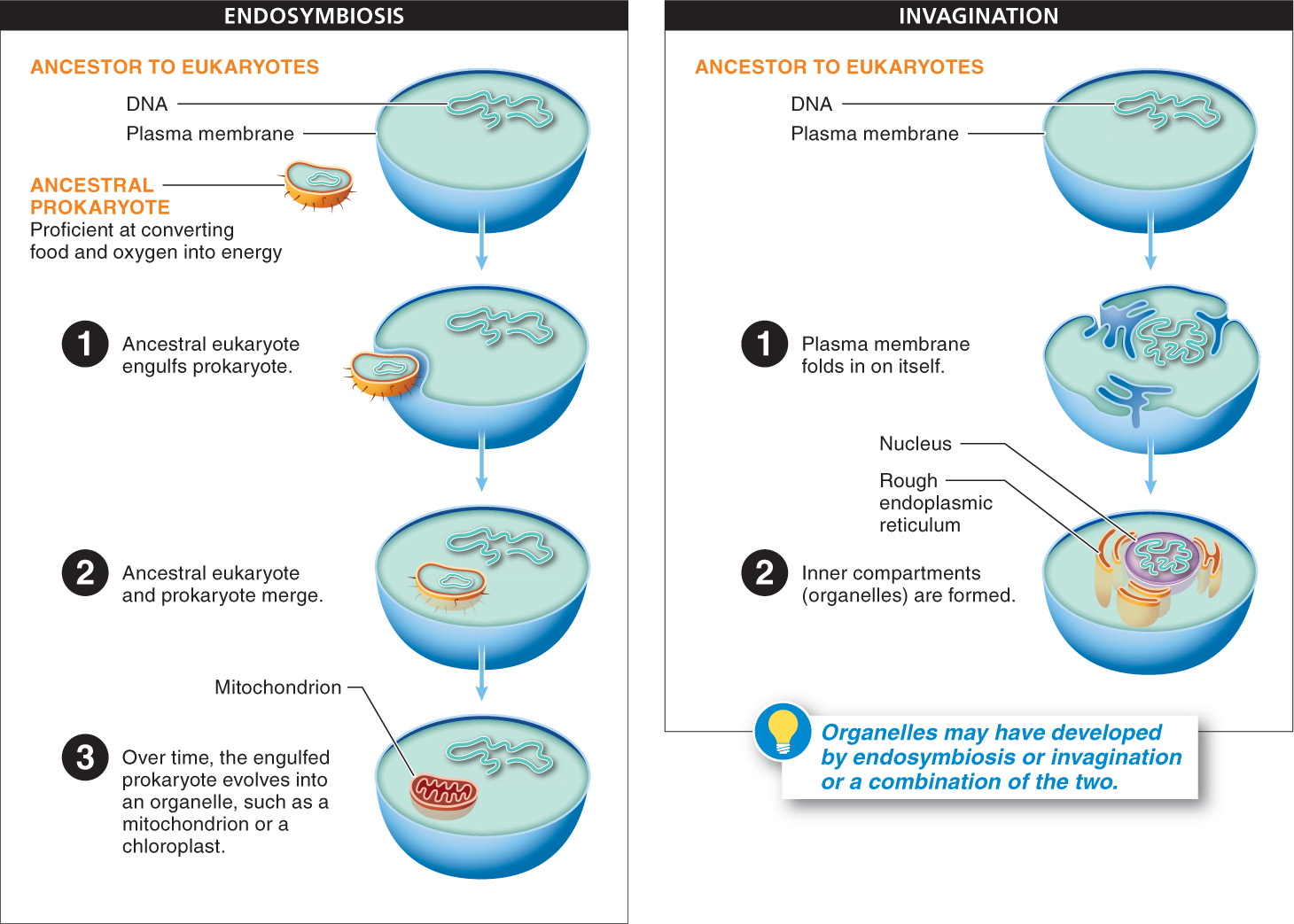In the two billion years that eukaryotes have been on earth, they have evolved into some of the most dramatic and interesting creatures, such as platypuses, dolphins, giant sequoias, and the Venus flytrap. Not all eukaryotes are multicellular, however. Many fungi are unicellular, and the Protista (or protists) are a huge group of eukaryotes, nearly all of which are single-

91
Eukaryotic cells are about 10,000 times larger than prokaryotic cells in volume. They possess numerous structural features that make it easy to distinguish eukaryotes from prokaryotes under a microscope (FIGURE 3-6). Chief among the distinguishing features of eukaryotic cells is the presence of a nucleus, a membrane-

The physical separation of compartments within a eukaryotic cell means that the cell has distinct areas in which different chemical reactions can occur simultaneously. In the mostly non-

When you compare a complex eukaryotic cell with the structurally simple prokaryotic cell, it’s hard not to wonder about the origin of eukaryotic cells. We can’t go back two billion years to watch the initial evolution of eukaryotic cells, but there is considerable evidence for some of what occurred. In particular, the endosymbiosis theory provides the best explanation for the presence of two organelles in eukaryotes: chloroplasts in plants and algae, and mitochondria in plants and animals. Chloroplasts enable plants and algae to convert sunlight into a more usable form of energy. Mitochondria help plants and animals harness the energy stored in food molecules. (Chapter 4, on energy, explains the details of both of these processes.)
92
Humans—
According to the theory of endosymbiosis, two different types of prokaryotes may have set up close partnerships with each other. For example, some small prokaryotes capable of performing photosynthesis (the process by which plant cells capture light energy from the sun and transform it into the chemical energy stored in food molecules) may have come to live inside a larger “host” prokaryote. The photosynthetic “boarder” may have made some of the energy that it captured in photosynthesis available for use by the host.
After a long while, the two cells may have become more and more dependent on each other, until neither cell could live without the other (they became “symbiotic”) and they became a single, more complex organism. Eventually, the photosynthetic prokaryote evolved into a chloroplast, the organelle in plant and eukaryotic algae cells in which photosynthesis occurs. A similar scenario might explain how another large host prokaryote engulfed a smaller prokaryote unusually efficient at converting food and oxygen into easily usable energy and this smaller prokaryote evolved into a mitochondrion, the organelle in plant and animal cells that converts the energy stored in food into a form usable by the cell (FIGURE 3-8).
The idea of the role of endosymbiosis in the evolution of eukaryotes is supported by several observations. .
- 1. Chloroplasts and mitochondria are similar in size to prokaryotic cells and divide by splitting (fission), just like prokaryotes.
- 2. Chloroplasts and mitochondria have ribosomes, similar to those found in bacteria, that allow them to synthesize some of their own proteins; this ability is not found in other organelles, which rely on proteins made by cytoplasmic ribosomes.
- 3. Chloroplasts and mitochondria have small amounts of circular DNA, similar to the circular DNA in prokaryotes and in contrast to the linear DNA strands found in a eukaryote’s nucleus.
- 4. Analysis of chloroplast and mitochondrial DNA has revealed that it is highly related to bacterial DNA, much more closely than it is related to eukaryotic DNA.
93
The best current theory about the origin of the other organelles in eukaryotes is a process called invagination. The idea is that the plasma membrane around the cell may have folded in on itself to form the inner compartments, which subsequently became modified and specialized (see Figure 3-8).

TAKE-HOME MESSAGE 3.3
Eukaryotes are single-
Compare and contrast the theory of endosymbiosis with the theory of invagination.
Both theories attempt to explain how intracellular structures came to be within eukaryotic cells as well as how these intracellular “compartments” subsequently became modified and specialized over time. Endosymbiosis involves an ancestral eukaryote engulfing an ancestral prokaryote. In time, both cells became mutually dependent upon one another to function and survive, and they became a single, more complex organism. Invagination involves one cell’s plasma membrane folding in on itself to form the cell’s inner compartments. Organelles that arose from endosymbiosis have their own ribosomes, similar to those found in bacteria, which allow them to synthesize some of their own proteins. Organelles stemming from invagination do not contain ribosomes.
94